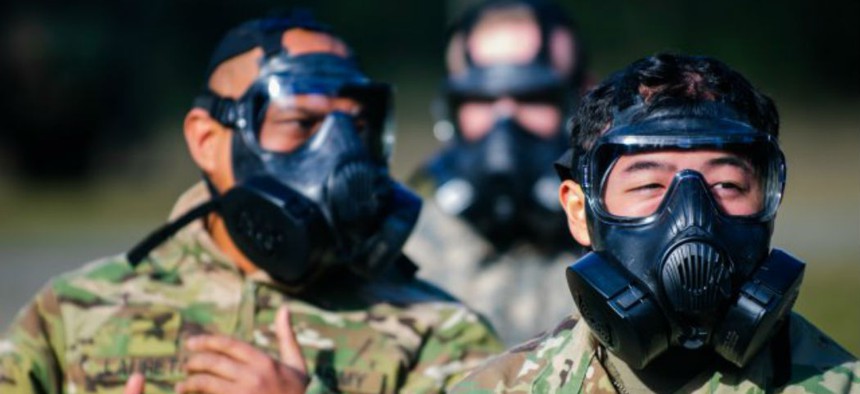Army soldiers increase simulated training prep for chem-bio attacks
General Dynamics Information Technology is upgrading web-based modeling and simulation technologies to prepare soldiers for emerging chemical and biological attacks.
The Army is upgrading simulation and modeling technology to further explore the impact of chemical, biological, radiological, and nuclear weapons attacks to better prepare the force and develop equipment and countermeasures to address emerging threats in the area, an industry statement said.
General Dynamics Information Technology (GDIT) was awarded a $45 million deal from the Army to advance Joint Effects Model (JEM) web-based software systems. The modeling includes exploring risks and solutions related to toxic industrial chemicals and materials incidence.
GDIT will upgrade and modify the system, as well as integrate JEM software, a company statement said.
“We will continue to provide the Department of Defense with enhanced modeling capabilities to measure the effects of CBRN weapon strikes and release incidents, giving them the situational awareness necessary to support rapid decision-making and risk mitigation,” Dan Busby, vice president and general manager of GDIT’s IT Services and Solutions sector, said in a statement.
The DOD is embracing more and more modeling and simulation for a variety of reasons: It lowers costs by precluding a need for as much developmental and operational testing. In addition, virtual training in this respect enables rapid upgrades as new threats and software patches or solutions emerge. As more IT and cyber initiatives move to the cloud, virtual training enables users to keep pace with innovations and risks in the field.





